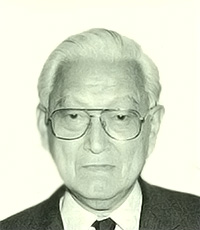Japanese Pioneers
Takeo Seki

Takeo Seki was born in 1909. On graduating from the Electrical Engineering Department in the School of Technology at Tokyo Imperial University in 1933, he took up a position at the Electrotechnical Laboratory of the Ministry of Communications and Transportation. After serving as a researcher and then engineer at the laboratory, he was posted to the Research Institute for Telecommunications of the Ministry of Telecommunications as manager of the radio research department, and in turn became manager of the basic research department and a deputy director of the institute. After moving to Hitachi, Ltd.’s Central Research Laboratory in 1959, he became manager of the fourth department, manager of the second department, a vice director, and a chief engineer. He later joined Hitachi Denshi, Ltd., and there became general manager of the innovation promotion division, a director, and a corporate advisor.
He worked on research into electronic televisions after entering the Electrotechnical Laboratory. His early major contributions included the application of semiconductors to storage-type image-pickup tubes in 1934 and basic concepts of optical fiber communications in 1936. Having realized the importance of solid-state components made from semiconductors in his days at the prewar Electrotechnical Laboratory, he later conducted study sessions on quantum theory, solid-state theory, the theory of electron behavior in metals, and other fields, after inviting staff from various departments of the laboratory with a view to cultivating personnel capable of taking over research into transistors and integrated circuits in the postwar era. Those inspired by the sessions came to be very active both inside and outside the Electrotechnical Laboratory. After hearing news of the invention of the transistor at Bell Laboratories in 1948, he recruited Shingo Iwase from Tohoku University, and formed a research team in 1950. The team succeeded in reproducing transistor operation in the same year, and they managed to produce Japan’s first alloy transistors in 1952. After moving to Hitachi, Ltd.’s Central Research Laboratory, he encouraged Takashi Tokuyama to persevere with his work on surface passivation. He eventually had the pleasure of congratulating Tokuyama on his invention of the technology for low-temperature surface passivation known as LTP. He is a visionary researcher.


